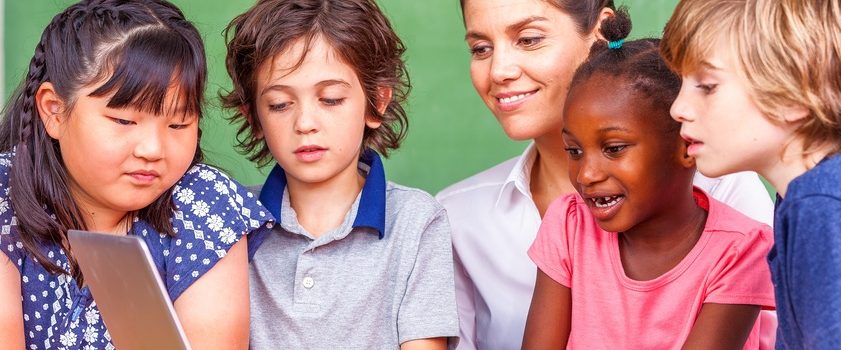The modern student arrives to class already immersed in technology and with high expectations of consuming information dynamically. What hasn’t changed about today’s students is they all learn in different ways. The key to engaging students is implementing instruction that speaks to various learning styles, and then developing ways to use varying instructional methods throughout lessons.
Differentiated instruction is a staple in modern instructional methods, and for good reason. The days of teaching from one text without student input are long gone. No two students learn at the exact same pace, or in the same style. By recognizing this, teachers can tailor instruction and activities to effectively educate all types of learners to foster a healthy, diverse, productive learning environment.
The diversification of teaching methods can take many forms. Most commonly, teachers provide the same information through different types of media in order to appeal to auditory, visual, and kinesthetic learners. Differentiated instruction is focused on imparting the essential concepts and objectives to students instead of relying on rote fact memorization.
Theoretically, differentiation is an ideal way to teach. However, many teachers find the concept overwhelming to implement. How do you obtain the information necessary to practice differentiated instruction effectively?
Technological Tools
- Gone are the days of relying on fellow teachers or the occasional conference to get advice on how to better design assignments and assessments. Modern educators have access to tools that revolutionize teaching methods. Today’s technology allows teachers to easily find lesson content and delivery ideas as well as track the performance of students based on lesson type and assignment results.
- Online assessments let educators quickly learn which types of lessons are most effective for each student. The valuable information acquired easily with online tools allows teachers to create the kinds of lessons that appeal to all students without hours of testing and analyzing data.
- Students also benefit from technology. Sharing assessments with students gives them valuable information about their own strengths and weaknesses, and helps them develop metacognition.
Student Input
- Students benefit from open, productive communication with educators by discussing and analyzing assessment results. One of the best ways to get input for planning differentiated instruction is to ask students which methods of learning they prefer. You may be surprised at the level of input your students provide.
- Regular assignments can also be tailored to individual students. Instead of assigning one project based on one text, teachers can increase student achievement by offering choices. Letting students choose topics that interest them and projects that cater to their style of learning increases engagement across the board.
- Delegating to students gives them a sense of empowerment. Students will be more likely to take work seriously and retain information if they have a say in how it is presented. Teachers can also create groups within classes to pair those students that learn similarly, thereby creating an effective way to manage large classes.
With direct input from students, efficient use of technology, and creative delegation, you will be well on your way to effective differentiated instruction and a thriving classroom. Overall, differentiated instruction has a positive impact on students and educators alike.

